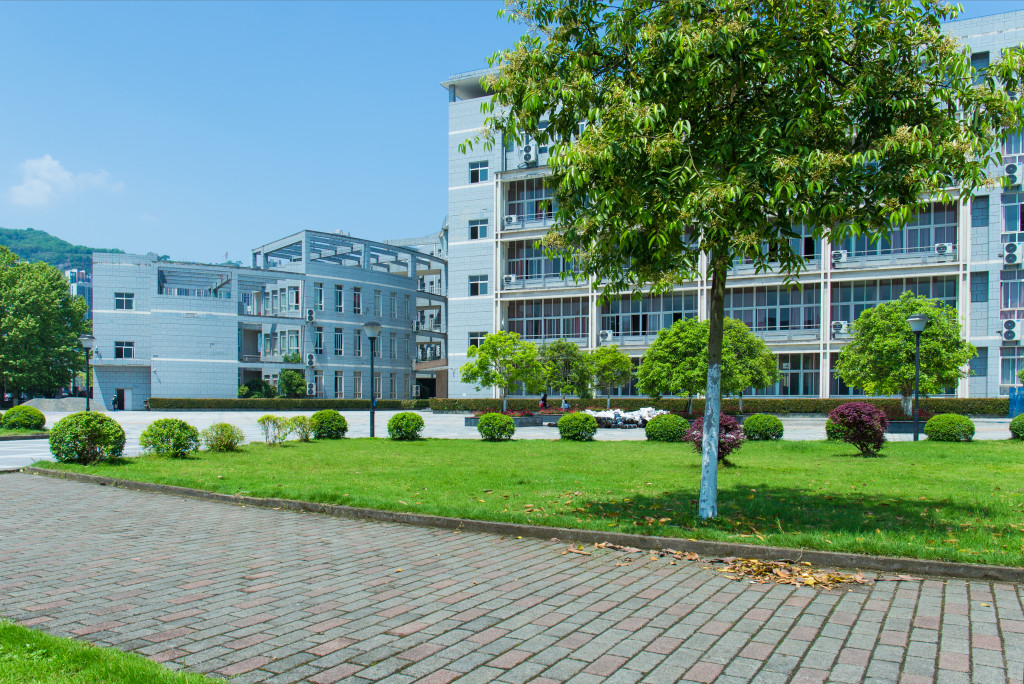- Consider accessibility, size, the layout of the building, and design to promote learning when constructing a school building.
- Allocate outdoor space for students that allow access to nature and encourages physical activity.
- Furnishings, lighting, and acoustics should be designed with comfort, functionality, and student achievement.
- Adapting stormwater management strategies to protect the environment and save money is necessary.
Constructing a school building is an important task that requires careful planning and consideration. There are many factors to consider, from the size and layout of the building to its accessibility and safety features.
Additionally, it’s essential to consider how the school’s design can promote learning and inspire students. This article will examine some key things to remember when constructing a school building. With these tips in hand, you will be well on your way toward creating an ideal learning environment for your students!
Accessibility
Size and Layout of the Building
When constructing a school building, size and layout are both important considerations. For example, larger classrooms are necessary to accommodate your student base, while allowing for ample space between desks and desks and other teaching materials is essential for safety and comfort.
Additionally, it would be best if you designed the layout of the building with students in mind; hallways need to be large enough to allow students to move safely and comfortably throughout the building while also creating an environment conducive to learning. It’s essential to consider these factors so that teachers have the proper setup in their classrooms and have enough space to run an effective education program within the four walls of the building.
Design to Promote Learning

As educators and administrators look to create an optimal learning environment, they should pay close attention to the design of the school building. Adopting a design to promote learning has benefits – from reducing distractions, providing spaces for creative exploration, and allowing more space for collaboration – all of which are essential components in today’s classrooms.
A design incorporating natural elements, such as abundant natural light for students or plants for air purification, can also help improve student achievement by creating a positive aesthetic. Flexible furniture that is easy to move and reconfigure depending on classroom activities can encourage collaboration and shared learning experiences among students.
Designing a school building with these principles in mind goes beyond aesthetics– crafting an environment conducive to teaching and learning success.
Outdoor Space for Students
Ensuring adequate outdoor space should be a priority when constructing a new school building. During their day-to-day routine, students need outlets to step away from the confines of indoor classrooms and get out in nature.
Having outdoor greenspaces can help foster physical activity, reduce student stress levels, and create a much-needed connection to nature. Furthermore, studies have linked increased exposure to green areas with improved academic performance for children. Incorporating outdoor recreational spaces, such as fields for sports or playgrounds, will provide physical benefits and foster social interactions among classmates.
With exterior gardens, learning centers, and seating areas, school grounds can become more than just a place where students arrive in the morning and leave at night: they can act as an outdoor classroom to help cultivate lessons in science and other fields while providing a variety of much-needed activities during lunchtime recess days.
Furnishings, Lighting & Acoustics
When constructing a school building, it’s essential to consider furnishings, lighting, and acoustics. Not only do comfort and functionality need to be considered, but also student achievement. Furnishings should be designed for durability and ergonomic support to ensure a safe learning environment.
Adequate quantities of natural light must be supplied into the classrooms during the day, supplemented by efficient overhead lighting when needed. Proper acoustic treatment should also be factored so that group discussions, lectures, and other materials are presented with clarity and intelligibility. These elements must be considered when designing schools to create an atmosphere where students can feel comfortable and focus on their studies.
Stormwater Management
When building a school, reliable stormwater management must not be overlooked when building a school. It’s essential to take into account the environment around the school and plan for the impact the building will have on the surrounding landscape. This means considering rain gardens, cisterns, permeable landscaping, and water collection systems.
These strategies help manage rainfall runoff and decrease erosion in areas where students might play or walk outside but they also can save money in terms of irrigation costs. With deeper planning at inception, administrators can better protect their schools while also providing environmental education to students as they interact with nature every day.
Parking Lots & Security Measures

Ensuring the safety of students on school grounds is more critical now than ever before, so instituting proper security measures, including parking lot infrastructure, when constructing a school building has become paramount. Parking lots should be designed with clear signage and well-defined paths to create order and reduce confusion while entering and exiting the property.
Lighting can be installed in the parking lot to provide a sense of security and protection during the evening hours, and physical features like fences or bollards can further deter students from wandering off campus. Additionally, incorporating steps like installing cameras or automated gates can offer an extra layer of control and accountability for administrators.
These are just a few key considerations to keep in mind when constructing a school building. By understanding the size, layout, design, and security needs of the facility, administrators can ensure that their new school is able to provide an optimal learning environment for students.


